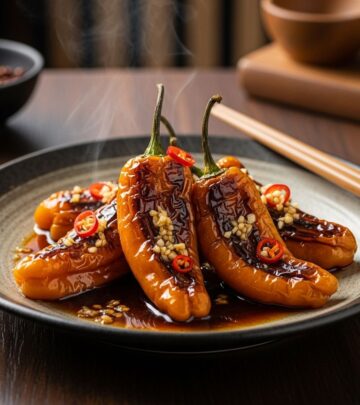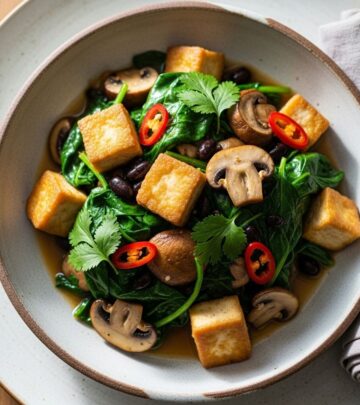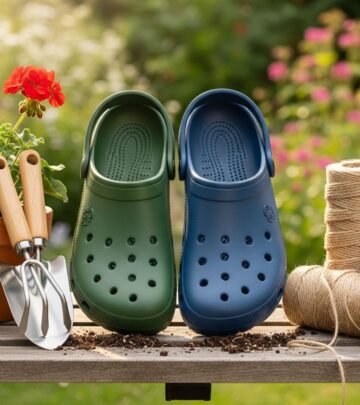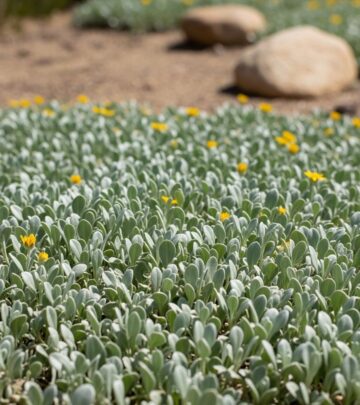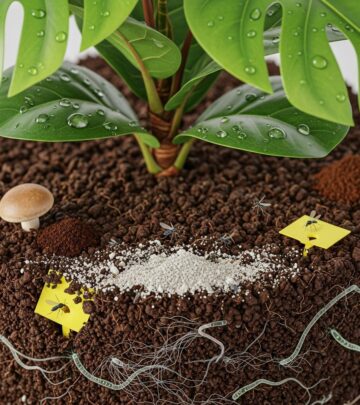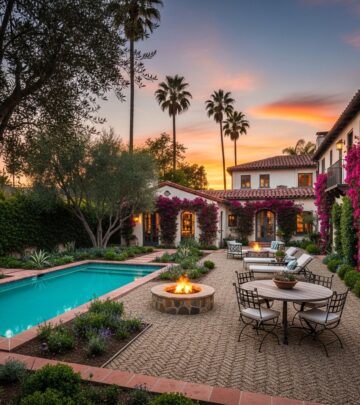Types Of Blue Flowers: 59 Stunning Varieties For Your Garden
Discover the most beautiful blue blooms to transform your garden into a tranquil blue paradise

Image: HearthJunction Design Team
The Enchanting World of Blue Flowers
Blue is one of the most coveted colors in the garden landscape, bringing a sense of tranquility, depth, and cool elegance to any outdoor space. Despite being relatively rare in nature (fewer than 1 in 10 plants produce true blue blooms), there are still numerous stunning blue flowers available to gardeners who wish to incorporate this serene hue into their landscape design.
The rarity of blue in the plant world stems from the fact that plants have difficulty synthesizing the pigments required to produce genuinely blue petals. This is precisely what makes blue flowers so special and eye-catching in garden settings. In this comprehensive guide, we’ll explore 59 magnificent blue flowers, from true azure specimens to those with purple-blue or lavender-blue tints, along with essential care instructions to help them thrive in your garden.
Sea Holly (Eryngium planum)
Sea holly produces striking steel-blue flowers that add architectural interest and a metallic quality to garden beds. Growing 2 to 3 feet tall and spreading 1 to 2 feet wide, this eye-catching perennial thrives in full sun and is exceptionally drought-tolerant once established.
This low-maintenance plant is perfect for gardeners with limited time. Its unique blue coloration actually intensifies with increased sun exposure, so be sure to position it in a sunny location for the most vibrant display. Sea holly prefers dry, sandy soil conditions and is an excellent choice for coastal gardens or xeriscaping projects.
When caring for sea holly, the main concern is avoiding overwatering, as it’s susceptible to root rot in soggy conditions. Otherwise, it’s relatively free from pests and diseases. Occasional deadheading can encourage additional blooms and create a tidier appearance. Sea holly performs best in USDA hardiness zones 5 through 9.
Siberian Bugloss (Brunnera macrophylla)
If you’re charmed by forget-me-nots but want something more substantial, Siberian bugloss is an excellent alternative. This shade-loving perennial produces similar delicate blue flowers but pairs them with stunning heart-shaped foliage that provides visual interest even when the plant isn’t blooming.
Growing 1 to 1.5 feet tall and spreading 1.5 to 2.5 feet wide, Siberian bugloss forms attractive mounded clumps that work beautifully in woodland gardens or shaded borders. The plant blooms prolifically from April to May, creating a carpet of sky-blue flowers that brighten up darker areas of the garden.
Unlike many blue flowers that demand full sun, Siberian bugloss actually prefers partial to full shade, particularly in warmer climates. This makes it a valuable addition to garden areas where many other flowering plants would struggle. It’s generally easy to care for with few pest or disease issues and thrives in USDA zones 3 through 8.
Blue Mistflower (Conoclinium coelestinum)
Blue mistflower is a stunning late-season bloomer that brings a soft cloud of pale purplish-blue flowers to the garden when many other plants have finished flowering. This medium-sized herbaceous perennial grows to about three feet tall, developing several vertical stems lined with bright green, serrated leaves that have a slightly crinkled texture.
The broadly rounded clusters of fluffy, pale bluish-purple flowers appear in late summer and early fall, creating a soft and fuzzy appearance that adds wonderful texture to the garden. In favorable conditions, blue mistflower spreads readily through both rhizomes and self-seeding, quickly forming impressive drifts of color.
If you’re concerned about its spreading nature, you can control blue mistflower by installing solid boundaries, planting it in areas with deeper shade, or in drier soil conditions—all of which will naturally limit its expansion. This beautiful native plant attracts numerous pollinators, including butterflies, making it a valuable addition to wildlife gardens.
Morning Glory ‘Heavenly Blue’ (Ipomoea tricolor)
For gardeners seeking a spectacular climbing blue flower, ‘Heavenly Blue’ morning glory delivers breathtaking results. This vigorous annual vine produces stunning 4-5 inch wide, sky-blue flowers with contrasting white throats. The blooms open in the morning (hence the name) and close in the afternoon, creating a daily display of blue magnificence.
Morning glory vines can reach lengths of up to 15 feet, making them perfect for covering fences, trellises, or pergolas. They bloom continuously from summer until the first frost, providing months of beautiful blue flowers. The heart-shaped green foliage creates an attractive backdrop for the show-stopping blooms.
This plant thrives in full sun exposure and is relatively low-maintenance once established. It’s worth noting that parts of the morning glory plant are toxic if ingested, so take appropriate precautions if you have children or pets. ‘Heavenly Blue’ morning glory attracts pollinators and is deer-resistant, adding to its appeal for many gardeners.
Borage (Borago officinalis)
Borage is a multifunctional blue-flowering annual herb that offers both ornamental and culinary benefits. Also known as starflower, it produces clusters of stunning star-shaped blue flowers that have a sweet honey flavor and can be used as edible garnishes. The cucumber-flavored leaves are also edible, making this a versatile addition to herb gardens.
Growing 24-36 inches tall with a spread of 1-2 feet, borage develops quickly from seed, typically blooming within 50-60 days. It thrives in full sun locations and performs well in USDA hardiness zones 4 through 8. Beyond its culinary uses, borage seeds contain gamma-linoleic acid (GLA), an omega-6 fatty acid associated with various health benefits.
Borage is also highly attractive to pollinators, particularly bumblebees, making it a valuable addition to wildlife gardens. Its long blooming season provides sustained beauty and ecological benefits. For continuous blooms, consider succession planting every few weeks throughout the growing season.
Tuscan Blue Rosemary (Rosmarinus officinalis ‘Tuscan Blue’)
While primarily grown for its aromatic foliage and culinary uses, ‘Tuscan Blue’ rosemary also produces charming delicate blue flowers during spring and summer months. This dual-purpose plant adds both flavor to your kitchen and subtle blue color to your garden landscape.
As an evergreen perennial in suitable climates, ‘Tuscan Blue’ rosemary offers year-round structure and visual interest. The plant is exceptionally drought-tolerant once established, making it a resilient and easy-growing choice for Mediterranean garden designs or water-wise landscapes.
For best results, plant ‘Tuscan Blue’ rosemary in full sun with well-draining soil. Its upright growth habit and blue-flowering stems make it suitable for both ornamental and practical applications, from border plantings to herb gardens or even container growing.
Blue Columbine (Aquilegia caerulea)
Blue columbine produces uniquely shaped flowers with distinctive spurred petals in shades ranging from pale sky blue to deeper violet-blue. These delicate, nodding blooms appear in late spring to early summer, adding an ethereal quality to partially shaded garden areas.
This perennial grows in attractive clumps, reaching about 1-2 feet tall with a similar spread. The blue outer petals contrast beautifully with white central petals, creating a bicolor effect that stands out in woodland gardens and cottage-style plantings. The blue columbine’s foliage is also attractive, with a delicate, ferny appearance that provides texture even when the plant isn’t flowering.
Blue columbine prefers partial shade and moist but well-draining soil. It’s relatively low-maintenance and will self-seed in favorable conditions, creating naturalized drifts over time. The plant attracts hummingbirds and other pollinators, adding ecological value to its ornamental appeal.
Lewis Blue Flax (Linum lewisii)
Lewis blue flax produces a profusion of delicate, sky-blue flowers on slender stems. This native North American wildflower creates a cloud-like effect in the garden when in full bloom, with numerous five-petaled blue flowers dancing above narrow, blue-green foliage.
Growing 1-2 feet tall, blue flax works beautifully in meadow gardens, prairie-style plantings, or naturalized areas. It’s exceptionally drought-tolerant once established and thrives in poor to average soils, making it an excellent low-maintenance choice for challenging garden conditions.
Blue flax blooms prolifically in early to mid-summer, with each individual flower lasting only a day but replaced by new blooms in succession over an extended period. This creates weeks of continuous blue color in the landscape. For best results, plant in full sun with well-draining soil.
Forget-Me-Not (Myosotis sylvatica)
Few blue flowers capture the imagination quite like forget-me-nots. These charming spring bloomers produce masses of small, five-petaled blue flowers with yellow centers, creating a heavenly carpet of color in partially shaded garden areas. The name carries romantic symbolism, traditionally representing true love and remembrance.
Growing 6-12 inches tall, forget-me-nots work beautifully as woodland groundcovers, in cottage garden settings, or along stream banks and pond edges. They prefer consistently moist soil and partial shade, especially in warmer climates. In ideal conditions, forget-me-nots will self-seed prolifically, returning year after year with minimal effort.
While typically blue, forget-me-not flowers occasionally appear in pink or white forms as well. The blooms are small but numerous, creating a significant visual impact when grown in masses. They combine beautifully with spring bulbs and other early-season perennials.
Frequently Asked Questions About Blue Flowers
Q: Why are blue flowers so rare in nature?
A: Blue flowers are rare because plants lack the ability to produce true blue pigments naturally. What appears blue in many flowers is actually modified anthocyanin pigments that reflect blue light. Plants must perform complex chemical modifications to produce blue hues, which is why fewer than 10% of flowering plant species produce blue blooms.
Q: Which blue flowers are easiest to grow for beginners?
A: Some of the most beginner-friendly blue flowers include borage, morning glory ‘Heavenly Blue’, forget-me-nots, cornflowers, and lobelia. These varieties tend to be relatively forgiving of less-than-ideal conditions and offer reliable blue color with minimal maintenance.
Q: How can I create a garden design focused on blue flowers?
A: To create a blue-themed garden, incorporate blue flowers that bloom in different seasons to ensure continuous color. Combine various blue shades from pale sky blue to deeper indigo, and add silver-foliaged plants as companions to enhance the blue tones. White flowers can provide contrast, while yellow accents (like the centers of forget-me-nots) will make blues appear more vibrant through color theory principles.
Q: Are there true blue roses?
A: Despite extensive breeding efforts, there are no naturally occurring true blue roses. What are marketed as ‘blue roses’ are typically white roses that have been dyed blue or genetically modified varieties that appear more lavender or purple than genuinely blue. The quest for a true blue rose continues to be a holy grail in plant breeding.
Q: Which blue flowers perform best in shade?
A: Several beautiful blue flowers thrive in partial to full shade, including Siberian bugloss (Brunnera), forget-me-nots (Myosotis), Virginia bluebells (Mertensia), blue woodland phlox (Phlox divaricata), and certain blue-flowered hostas. These shade-tolerant options allow you to incorporate blue blooms even in less sunny garden areas.
References
- https://www.epicgardening.com/blue-flowers/
- https://www.epicgardening.com/blue-mistflower/
- https://shop.epicgardening.com/products/tuscan-blue-rosemary
- https://shop.epicgardening.com/products/heavenly-blue-morning-glory-seeds
- https://survivalgardenseeds.com/blogs/survival-garden-training/stunning-blue-flowers-to-grow
Read full bio of Shinta

